Maharashtra: How one city avoided worst of India floods
- Published
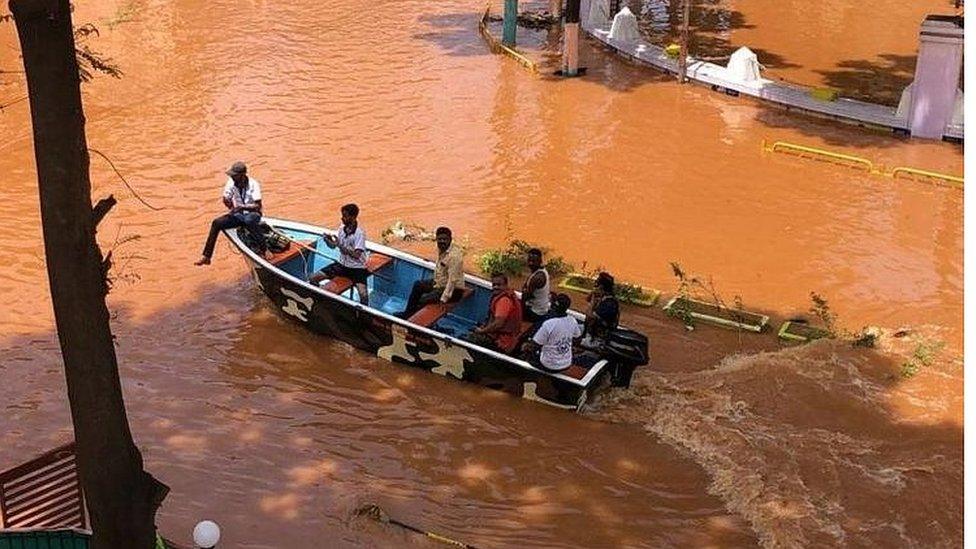
Rescuers have evacuated about 169,000 residents in Sangli city so far
When the western Indian city of Sangli went under water on Saturday, Hasmukh Dani watched in horror.
The 70-year-old has witnessed four floods since 1962 in his city in the state of Maharashtra.
Known as the fertile black soil region of the state, Sangli, along with the city of Kolhapur, are historically known for recording high flood levels, breaking records along the way.
"2019 was the worst - water levels rose up to six feet [two metres]," said Mr Dani, who runs a small store in the city.
"But this time, we were prepared."
As the spectre of floods once again loomed over Sangli last week, Mr Dani immediately shut shop and shifted all his products to a warehouse. Then, he made arrangements for lodgings in case the flood waters entered his home.
"We were scared - what if something like 2019 happened again," he said.
At least 149 people have died across Maharashtra in floods, landslides and incidents like walls collapsing, as the state experiences its worst spell of monsoon in July in 40 years.
The local media is filled with distressing images of residents taking shelter on the roofs of buildings as waters gushed into the lower floors. Thousands have been left without power, while some have been cut off entirely as violent rains knocked out electricity and mobile towers.
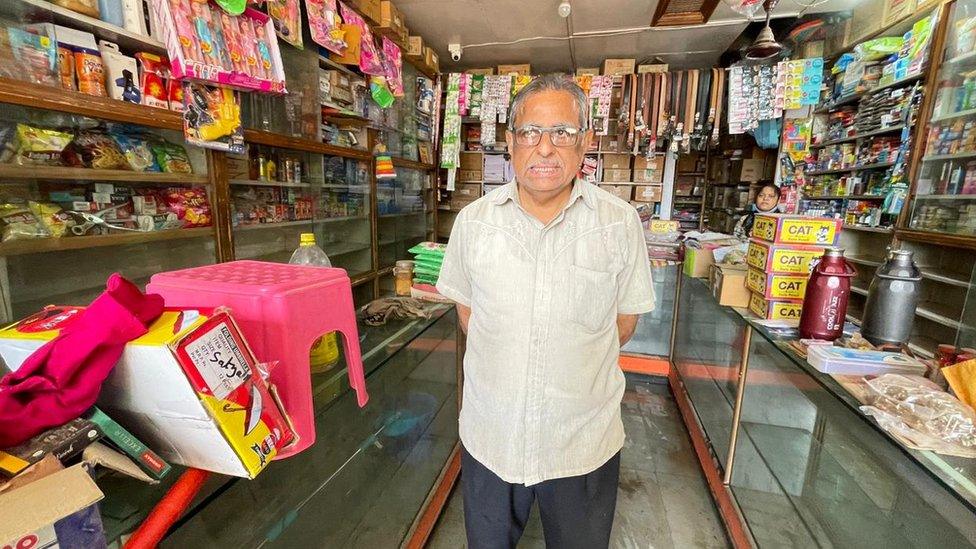
Hasmukh Dani has witnessed four floods in Sangli since 1962
Floods happen annually in India during the monsoon season, which lasts from June until September.
But experts say climate change caused by global warming has made extreme rainfall more likely and more frequent. A rise in sea levels has contributed to the problem.
Heavy rains and flooding have also hit western Europe and parts of China in recent weeks, while North America has grappled with scorching heat waves.
In Sangli - which is among one of the worst affected areas - swathes of muddy brown water inundated 40 locations on Saturday, overwhelming houses and leaving several more on the verge of collapse.
The police said more than 60% of the city has been under water since then.
But unlike other districts, the rescue operation in Sangli is something of a success story, authorities say.
About 50% of the city's population residing in low-lying areas had already been evacuated from their homes and moved to safety amid news of rising water levels, according to officials.
Nitin Chowgule, a rescue worker, said this was because of residents' "past experiences".
"They have seen the floods in 2019 and 2005. They were prepared and left their houses on time," he said.
But not all residents were prepared for the deluge.
"We saw the floods of 2019, so there was no fear. But as the water levels rose inch by inch, so did our anxiety," said Reena Shah, 65, as she pointed to her house, partly submerged in water.
Ms Shah said she and her grandson were stuck in their home for two days without electricity, while her son was in hospital with her husband, who was admitted there.
"There was no sign of water receding. My grandson was petrified," she added.
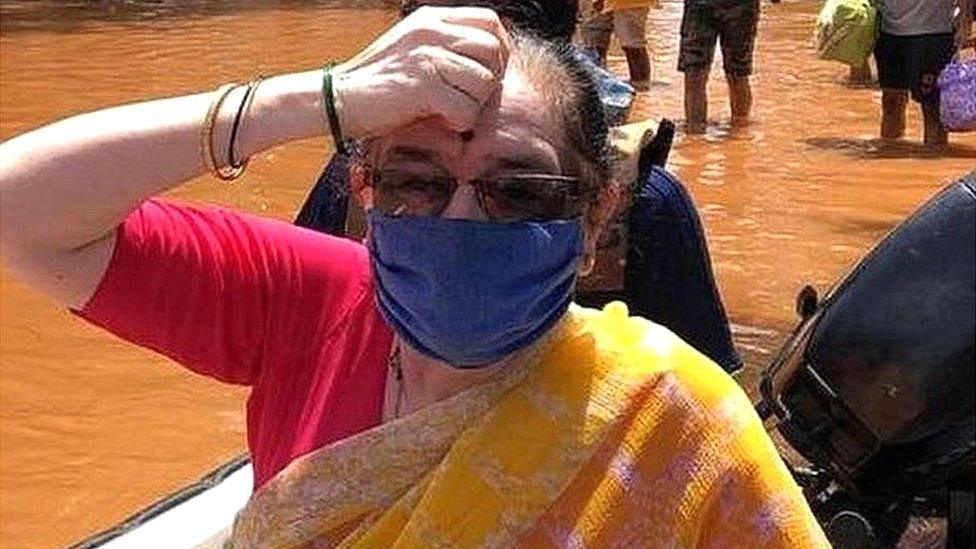
Reena Shah, 65, was stranded in her home with her grandson for two days
A rescue squad pulled them out on Sunday afternoon. Ms Shah said she could only manage to bring a few of their important belongings.
"We are shaken," she said.
On Sunday, hundreds of soldiers, naval officers and emergency responders in Sangli continued to sift through ruins to save people. About 169,000 residents have been evacuated so far.
And while the rains had subsided by Monday, water was still flowing waist-high through the streets amid crumbling heaps of debris.
As rescuers swam back and forth, some residents raised questions about whether authorities had been prepared for a catastrophe of this scale.
"We knew this was coming - the rains and floods. But we didn't think it would be this serious," said a 70-year-old man as he helped his wife to get on the rescue boat.
The couple was trapped overnight after water levels rose up to five feet, swamping their house and surrounding areas.
"The administration said the water will not rise up to such alarming levels. So, we stayed home," the man added.
The National Disaster Response Force (NDRF) said it would continue its efforts to rescue people. "We are supplying milk, food and essentials to those who are still trapped," senior NDRF official Narendra Kumar said.

Watch: Landslide destroys bridge in Himachal Pradesh

Related topics
- Published24 July 2021
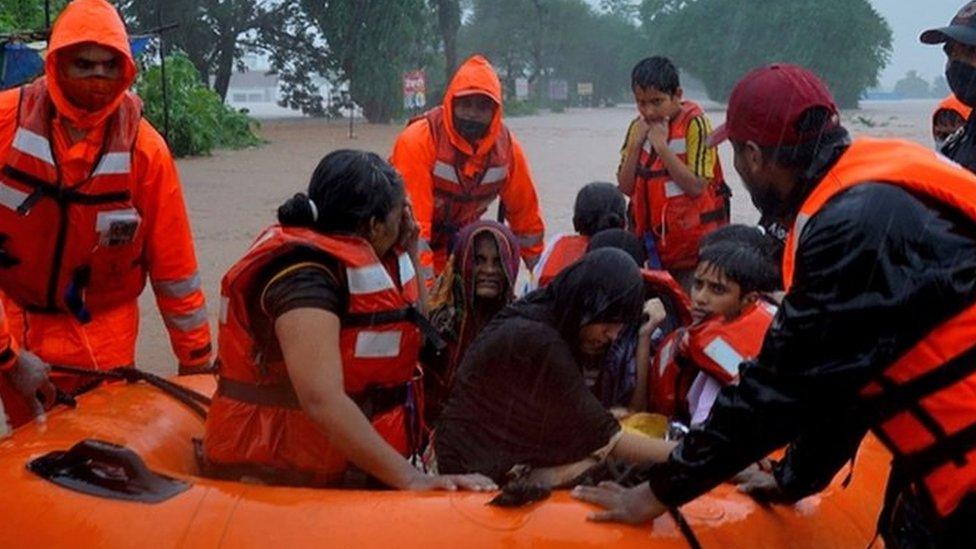
- Published25 July 2021
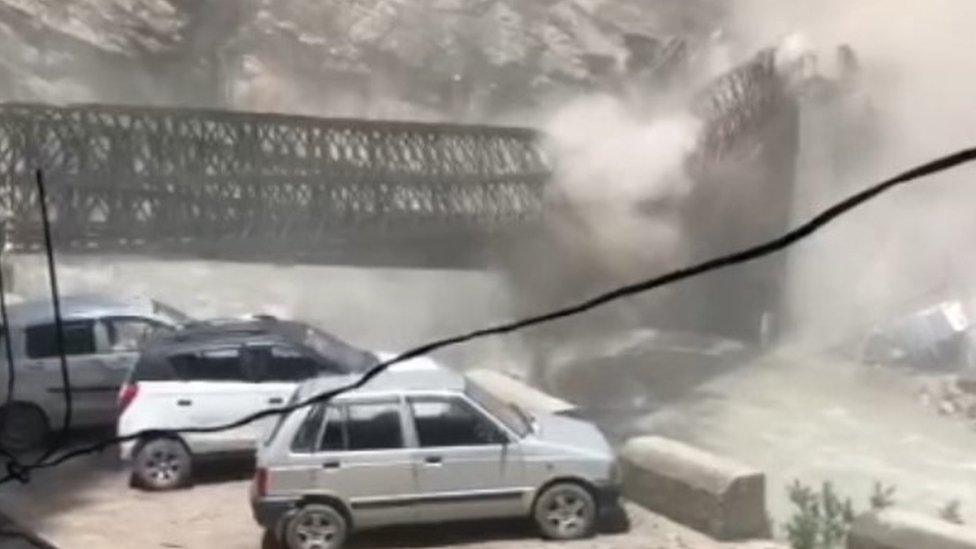
- Published24 July 2021
